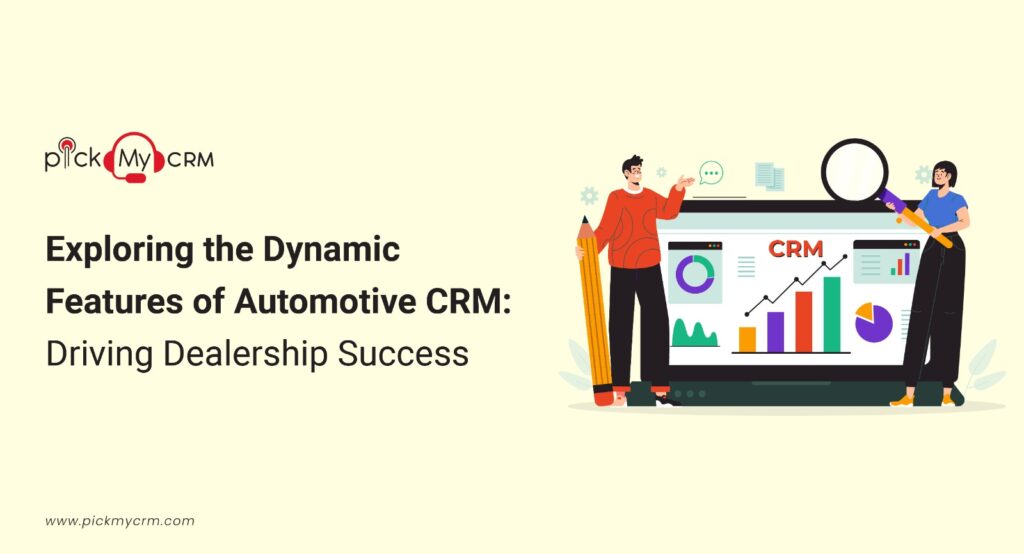Implementation of Automotive CRM: A Comprehensive Guide
How to Implement Automotive CRM Successfully
Implementing a Customer Relationship Management (CRM) system in the automotive industry requires careful planning and execution. A successful implementation can streamline operations, enhance customer experiences, and drive business growth. Within this comprehensive manual, We will guide you through each sequential stage of implementing the Automotive CRM system.Needs Assessment and Planning
- Define Objectives: Identify your goals for implementing the CRM. Are you looking to improve sales, enhance customer service, or streamline marketing efforts?
- Assess Current Processes: Understand your existing workflows, pain points, and bottlenecks. This assessment will help tailor the CRM to your specific needs.
- Engage Stakeholders: Involve key stakeholders from different departments to gather insights and ensure their buy-in.
CRM Selection
- Research and Shortlist: Research CRM providers that specialize in the automotive industry. Shortlist solutions that align with your objectives.
- Features Evaluation: Evaluate features such as lead management, contact segmentation, communication tools, reporting capabilities, and integration options.
- Scalability: Ensure the chosen CRM can scale as your business grows.
Data Preparation and Migration
- Data Mapping: Map existing data fields to corresponding fields in the CRM. It includes customer details, sales history, communication records, and more.
- Data Cleansing: Cleanse and de-duplicate data to ensure accuracy. Incorrect or redundant data can impact CRM effectiveness.
- Data Migration: Migrate data from your existing systems to the CRM. It might require data transformation and validation.
Customization and Configuration
- Workflow Design: Craft workflows that Replicate your business procedures, Spanning from lead generation to post-sale follow-up.
- Customization: Customize data fields, communication templates, and automation rules to Perfectly match the unique requirements of your Dealership.
Integration
- Integrate Existing Systems: Seamlessly integrate the CRM with your website, email, marketing tools, and other systems to ensure a seamless connection.
- APIs and Plugins: Harness the power of APIs and plugins to link the CRM with third-party tools you employ, like inventory management or finance systems.
Training and Onboarding
- User Training: Train your team on how to use the CRM effectively. Cover data entry, lead management, communication protocols, and reporting.
- Documentation: Provide user manuals or guides for reference. Consider organizing workshops for hands-on learning.
Phased Implementation
- Departmental Rollout: Implement the CRM in phases. Start with one department, such as sales, and expand gradually to other areas like marketing and service.
- Feedback Collection: Gather Feedback from users during each phase to identify issues and make necessary adjustments.
Performance Monitoring and Optimization
- Key Metrics: Define key performance indicators (KPIs) such as lead conversion rates, response times, and customer satisfaction.
- Regular Audits: Perform routine audits of CRM data to maintain accuracy and consistency.
Continuous Improvement
- Feedback Loop: Maintain an open feedback loop with users. Regularly solicit Feedback and suggestions for CRM improvements.
- Software Updates: Keep the CRM updated with the latest features and bug fixes provided by the vendor.
Data Security and Compliance
- Security Measures: Implement security protocols to protect customer data from unauthorized access or breaches.
- Compliance: Ensure compliance with data protection regulations, such as GDPR or CCPA, to maintain customer trust.
Measure ROI
- ROI Assessment: Measure the impact of the CRM on your business goals. Evaluate ROI by contrasting the acquired benefits with the expenses incurred for implementation and maintenance.
- Adjustments: Based on ROI analysis, Refine your CRM strategy and workflows for ongoing enhancement and progress.
Why Does Automotive CRM Implementation Matter?
- Personalized Experiences: CRM systems enable businesses to understand customer preferences, delivering tailored experiences that enhance satisfaction and loyalty.
- Efficient Lead Management: CRM streamlines lead tracking, automates follow-ups, and boosts conversion rates, reducing lost opportunities.
- Data-Driven Decisions: CRM harnesses data for insights, enabling informed decisions, trend analysis, and better strategic planning.
- Streamlined Operations: From inventory to after-sales service, CRM optimizes operations by improving coordination and minimizing errors.
- Enhanced Engagement: Multichannel communication tools facilitate consistent customer engagement through preferred channels.
- Effective Marketing: CRM segments customers for targeted campaigns, leading to improved marketing ROI and engagement.
- Future-Proofing: Automotive CRM lays the groundwork for adopting future technologies, ensuring long-term competitiveness.




